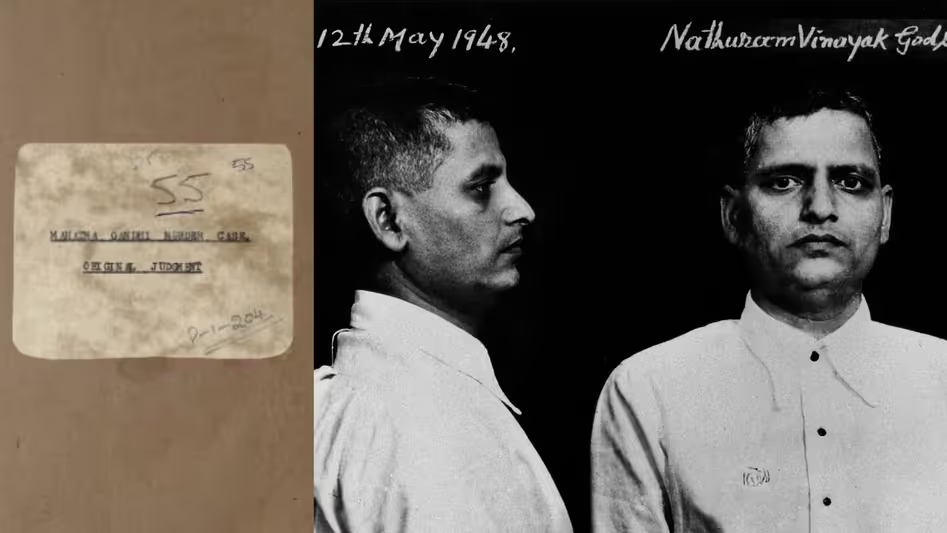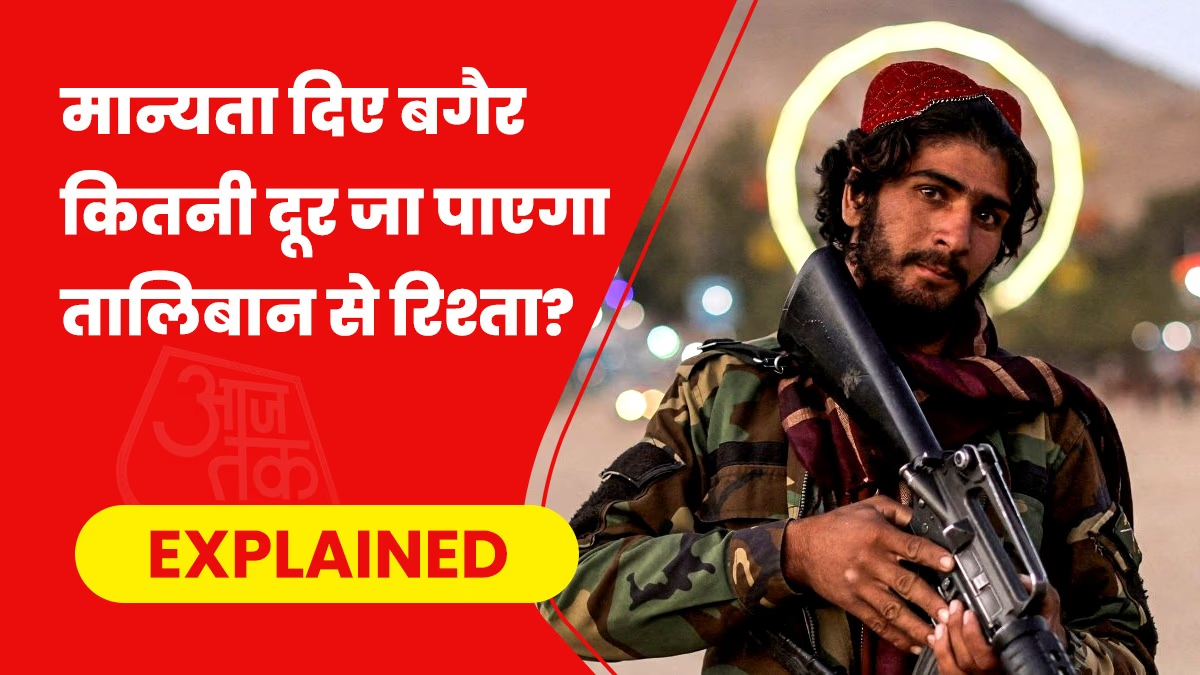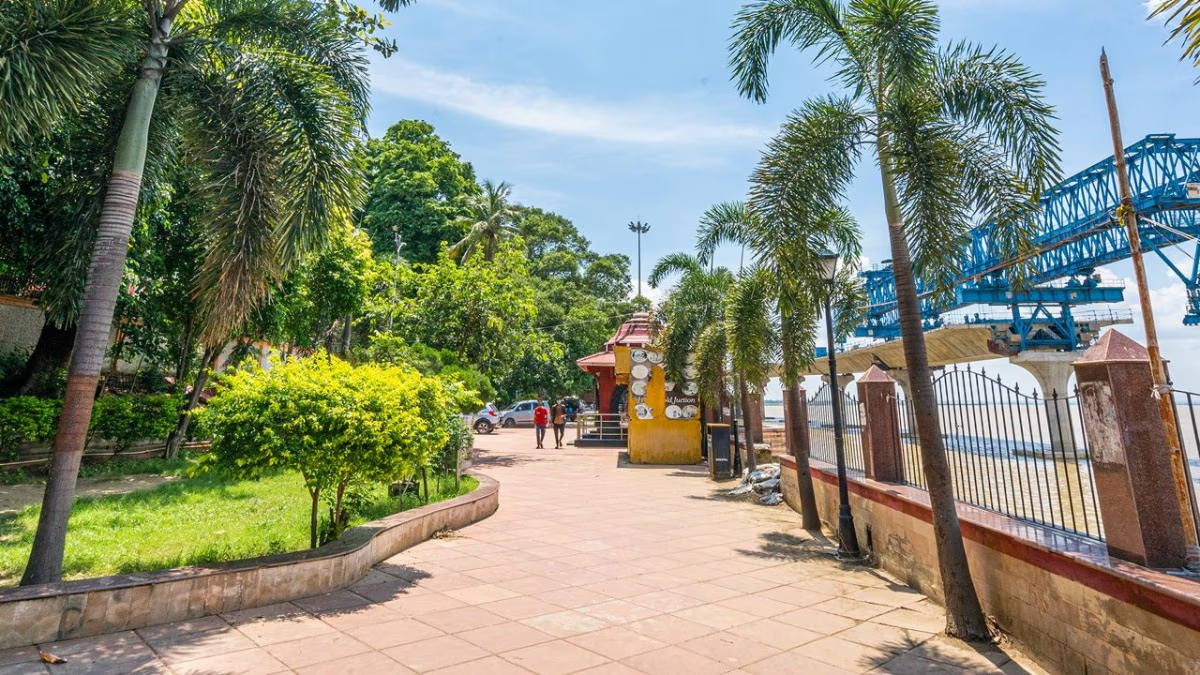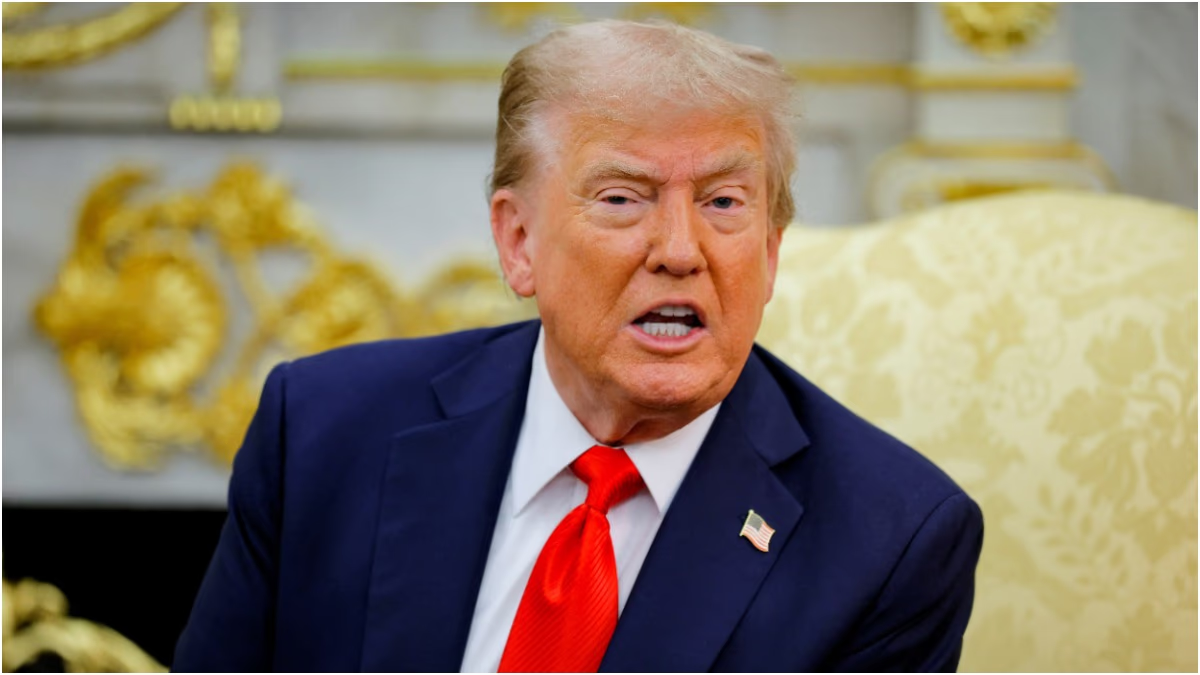On February 10, 1949, the trial for Mahatma Gandhi's assassination took place in Red Fort, revealing several conspirators. Extensive cross-examinations of witnesses were conducted for hours. Eventually, Nathuram Godse, Gandhi's assassin, was sentenced to death. This detailed judgment was recorded in a 211-page file.
Our team at Aaj Tak read through the entire file. On Gandhi's birthday, we bring you some unheard stories from this file. This series will delve into how Godse's identity was confirmed despite thousands of witnesses to the shooting. Nathuram Godse was arrested at the scene and later tried alongside Narayan D. Apte, Vishnu Karkare, and other conspirators. Godse and Apte were later executed on November 15, 1949, marking independent India's first execution.
An identification parade is a crucial aspect of criminal investigation. Witnesses are asked to identify the suspects from a group of people, ensuring accurate identification. In Gandhi's assassination case, several such parades were conducted to identify the main conspirators, including Nathuram Godse, Narayan D. Apte, and Vishnu Karkare.
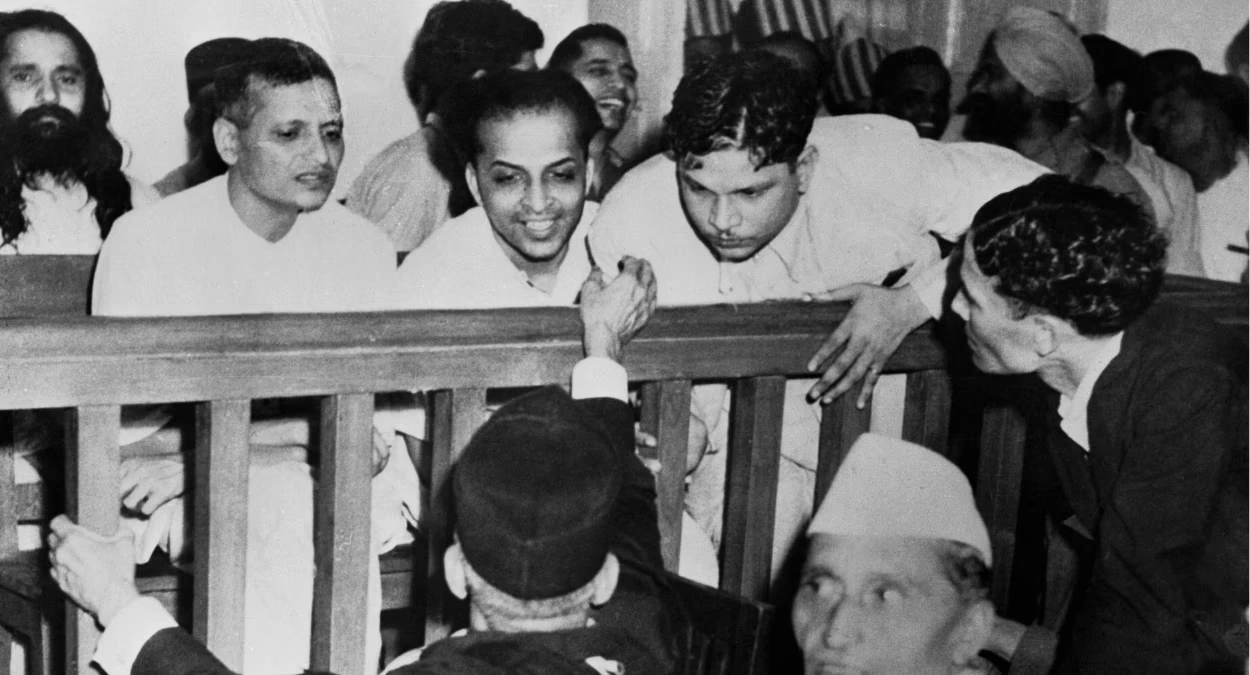
Source: aajtak
How Nathuram Godse Was Identified
The most crucial identification was of Nathuram Godse. On February 28, 1948, the first identification parade was conducted under the supervision of Magistrate Kishan Chand. Godse participated along with Narayan Apte, Vishnu Karkare, and twelve other suspects. The process was carried out under strict protocols.
During this parade, several witnesses correctly identified Godse. Key witnesses included Ram Chander, Kaliram, C. Pacheco, Marto Thadius, Surjit Singh, Mast. Kolochans, and Chhotu Ban. These witnesses' consistent identification significantly strengthened the case against Godse.

Source: aajtak
Defense Raised Major Questions About the Identification
During the identification process, the defense raised two critical questions:
However, Magistrate Kishan Chand clarified in his testimony that the head covering was not the sole reason for Godse's identification, and various other factors contributed to it. Moreover, Godse himself admitted that some individuals in the parade had covered their heads, and there was no significant difference due to the head covering.
Magistrate refuted this claim, noting that Apte did not visibly resemble a typical Maharashtrian. Additionally, both suspects were given the option to change their clothes during the parade. Therefore, their identification was not solely based on ethnicity.
Multiple Parades Conducted
The identification process did not stop with just one parade. Bombay's Head Presidency Magistrate Oscar B. Brown conducted several identification parades against Godse, Narayan Apte, Vishnu Karkare, and others. These proceedings continued for several months:
On January 7, 1948, an identification parade was held against Godse and Narayan Apte.
Another parade on February 1, 1948, included Godse, Apte, Karkare, and others.
Additional parades were held on March 16, 10, 14, and April 9, 1948.
Precautionary Measures Taken
Magistrate Oscar B. Brown took separate precautions for witness testimony. He selected individuals for the parades from various courtrooms and ensured that no police officers involved in the investigation were present during the proceedings.
According to the judgment, a Panchanama (memorandum) was written in the presence of all parties involved, and any objections or corrections could be raised. During these parades, none of the accused raised any objections.
The identification of Nathuram Godse and his co-conspirators played a crucial role in the legal process following Mahatma Gandhi's assassination. All identifications were made under stringent legal protocols.
Notably, the original judgment file of the Mahatma Gandhi murder case has been uploaded by the Delhi High Court on the online portal named High Court E-Museum. This portal includes original judgment files of several historic cases from both District Courts and the Supreme Court, featuring digital records of ten major cases, including the Delhi High Court's first judgment, Indira Gandhi's assassination, Parliament attack, and Red Fort attack.
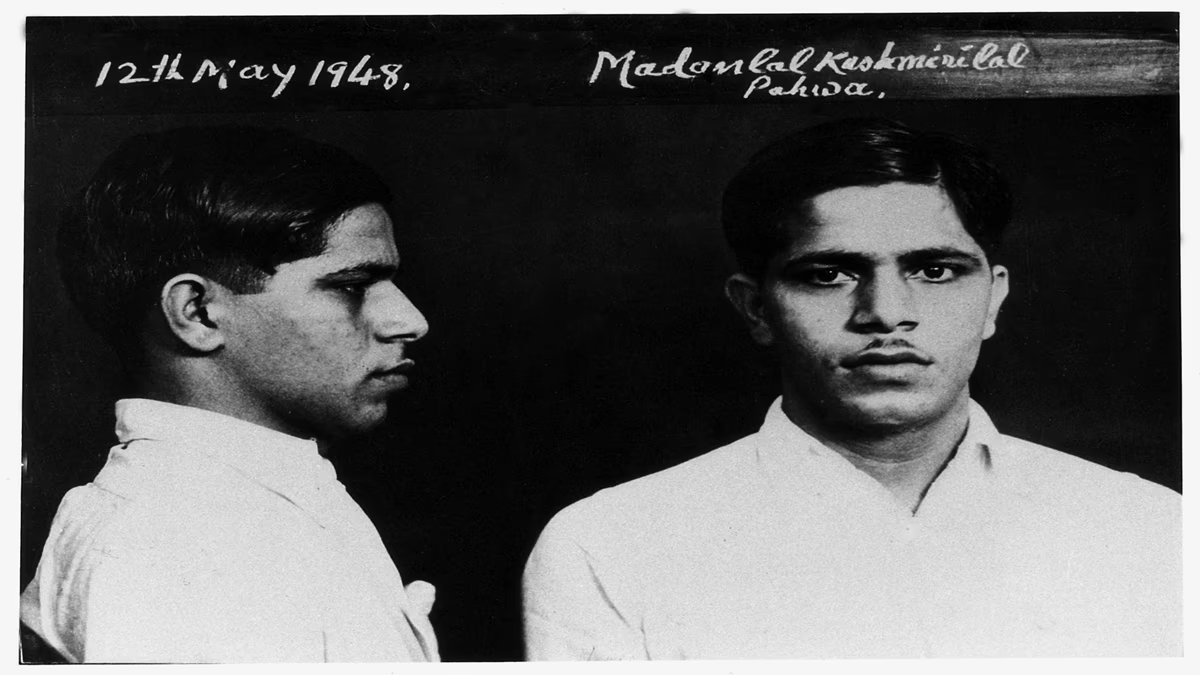
Source: aajtak
What Were the Defense Arguments
Mahatma Gandhi's assassination involved multiple conspiracies and legal challenges. Nathuram Godse shot Gandhi on January 30, 1948. In this high-profile case, one contentious name was Vinayak Damodar Savarkar and his role.
Throughout the proceedings, numerous conspirators emerged, and witnesses underwent extensive questioning. Defense strategies varied, but the main argument asserted by the defense was that Nathuram Godse acted alone, with no larger conspiracy. The defense efforts aimed to downplay the roles of other accused, such as Narayan D. Apte, Digambar Badge, and others. During the trial, all provided their statements.
'I am Solely Responsible'
Nathuram Godse, who shot Gandhi on January 30, 1948, submitted a lengthy written statement in his defense. This document detailed his actions and the events leading up to Gandhi's assassination. Godse claimed that although he committed the murder, it resulted from his personal political beliefs and not any conspiracy. He asserted that he was the sole mastermind of the crime, dismissing others' involvement.

Source: aajtak
According to his written statement, Godse and his close associate, Narayan D. Apte, traveled from Pune to Bombay on January 14, 1948. Godse claimed their aim was to protest in Delhi against Gandhi's role in the partition and his stance on giving ₹55 crore to Pakistan. Godse felt deeply betrayed and hurt by Gandhi's actions during the partition and the communal violence that followed. According to him, Gandhi's policies were responsible for Pakistan's creation and the suffering of millions of Hindus.
Under false identities, Godse and Apte boarded a flight from Bombay to Delhi on January 17, 1948, and stayed at Marina Hotel under fake names. They remained in Delhi until January 20, then traveled to Kanpur and returned to Bombay. Godse claimed that on January 27, he and Apte returned to Delhi under false identities. On January 30, 1948, Godse admitted that he alone shot Mahatma Gandhi at Birla House, taking full responsibility for the assassination.
Godse's defense rested on two main arguments: first, that he alone was responsible for Gandhi's assassination, and second, that his actions were politically motivated rather than driven by personal enmity.
Different Defense Strategies
The defense strategies in the Gandhi assassination case varied. Godse's defense focused on his personal motives, while others like Apte and Badge attempted to downplay their involvement or claim ignorance of any conspiracy.
The court's judgment, recorded in a 211-page file, is available on the Delhi High Court's High Court E-Museum online portal. This portal includes digital records of several historic cases, featuring original judgment files from both District Courts and the Supreme Court, such as the Delhi High Court's first judgment, Indira Gandhi's assassination, Parliament attack, and Red Fort attack judgments.
In the judgment, Godse admitted to his crime. Meanwhile, the roles of others, especially Apte, Badge, and Savarkar, were rigorously investigated. Ultimately, several accused were convicted, while some like Savarkar were acquitted due to a lack of evidence.

Source: aajtak
What Was Savarkar's Role?
One of the most controversial aspects of Gandhi’s assassination case was the role of Vinayak Damodar Savarkar, a prominent leader of the Hindu Mahasabha. Savarkar was accused of being a key conspirator in the assassination, with the prosecution arguing that he provided ideological support to Godse and Apte.
In his defense, Savarkar denied any involvement in the conspiracy. He claimed that while he had engaged in discussions with Godse and Apte, these conversations were only about political issues and had no connection with Gandhi's assassination. Savarkar emphasized that although he supported Hindu nationalism, he did not condone violence.
The court found no concrete evidence of Savarkar's direct involvement in the conspiracy. There were no substantial proofs linking him to the assassination plot. In the end, due to a lack of evidence, Savarkar was acquitted.
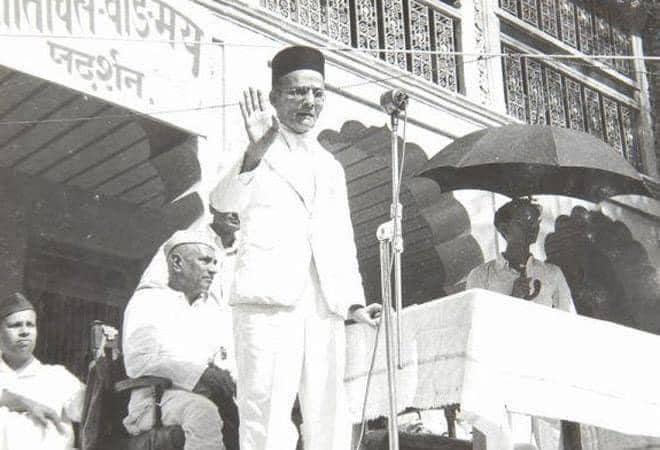
Source: aajtak
What Did the Medical Report Reveal?
In the hours following the assassination, investigators began collecting evidence from the scene. Two police officers, F.C. Rattan Singh and Jaswant Singh, maintained order and collected two empty cartridge cases, two fired bullets, and a bloodstained shoulder cloth from the prayer ground where Gandhi fell.
The autopsy on Gandhi's body was conducted by Colonel D.L. Taneja at New Delhi's Civil Hospital. He presented his report on January 31, 1948, at 8 AM, detailing Gandhi’s injuries:
According to Colonel Taneja, the cause of death was internal bleeding and shock.
Nehru Addressed the Nation
As news of Gandhi's assassination spread, the entire nation was engulfed in grief. Across India, people gathered in public places to mourn. World leaders expressed their sorrow and concern over this tragic event. At that time, Prime Minister Jawaharlal Nehru addressed the nation via radio:
"Friends and comrades, the light has gone out of our lives, and there is darkness everywhere... our beloved leader, Bapu, as we called him, the father of the nation, is no more."
On January 31, 1948, a massive funeral procession was held in New Delhi. His body was carried on a simple wooden platform, followed by millions of mourners standing along the streets, crying and singing prayers. Together, millions bid farewell to Bapu.
